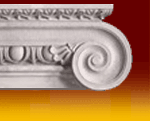Maintaining the exterior of your home is an ongoing process. On average exteriors need to be repainted about every 4
years, ocassionally less depending on exposure etc. Additional to that there are also repairs that may be needed.
Remember, if you put off things now you may end up having a much larger bill and greater problem later which may involve-
for example- replacing windows or dealing withg damp problems. A stitch in time save nine!!
GUTTERS CLEANED:
Need to be cleared annually to prevent the build up of eartth, debris, moss and so on. Otherwise this can lead to blocked
down-pipes and damp problems.
DOWN PIPES CLEARWAY
Once a year also the down pipes need to be checked for adequate soak-away. Water must be poured directly into the very
top of the down pipe to ensure there is fast soak away. If it does not then debris may be blocking the down pipe. This can
lead to rupture of joints, rotting, or damp walls later.
GUTTER/PIPES JOINTS:
If there is a drip coming from, or any moisture near the joints, or appeanace of moss or peeling paint then you
may have a rotten or ruptured joint or damaged seal. Get this repaired as soon as possible because delay can cause rust to
the joints, or build up of damp on the brick work, moisture running down the walls and so on.
PAINTWORK
Check on a quarterly basis at least thatt all painted surfaces are sound and that nowhere is there any: peeling, cracking
of paint or bare wood. Any such things need treatment before the onset of the next winter.
EXPOSED WOOD
Check for any bare wood. Bare wood will in time lead to rot and an expensive bill for replacement of cills or windows
etc. When was the exterior last painted?
BUBBLING
Bubbling of paintwork may be an indication that there is wet rot or at least moisture retention under the surface or
simply poor paint adhesion. Either way it need to be dealt with.
SOFT WOOD
Ocsassionally gently prod the window cills, and the joints and he lower sections at the bottom of the window frames.
If there is any softness then this can be the first stage of moisture retention by the wood leading in time to wet rot. The
wood needs to be heat strippded, and sealent/hardener put on followed by primer and undercoat and top coat.
WET ROT
If the wood is actually crumbling wood, and there are gaps or broken small broken blocks of wood which is brown and dry
then it is probably wet rot. If the area is small then can be dealt with relatively inexpensively by heat-treatment followed
by chemical stabiliser, hardener, exterior wood filler, and then the usual full paint treatment as above.
PUTTY
If there is any loose or missing putty around the window panes then it needs to be dealt with as soon as possible. Moisture
can otherwise build up and seep behind the glass leading to the wood rotting.
EXTERIOR DAMP PATCH
Possibly an indication of a leaking gutter or down pipe. If untreatred this can in time penetrate to the interior walls.
WINDOW FILLETS
There should be a complete unbroken seal of either cement or mastic filler between the brick work and the window
frame.

